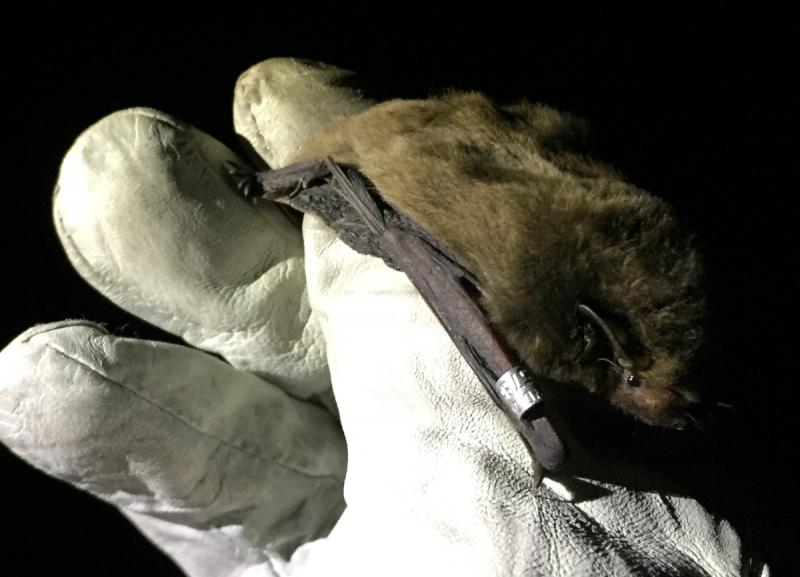search
date/time
 | Yorkshire Times A Voice of the Free Press |

Diane Wood
Wildlife Correspondent
12:16 PM 28th April 2019
nature
Nathusius' Pipistrelle Bat - A Long Distance Migrant In Yorkshire

Nathusius’ pipistrelle bat. Photo by Sarah Proctor
National Nathusius’ Pipistrelle Project
Nathusius’ pipistrelle (Pipistrellus nathusii) is the largest and rarest of the three pipistrelle bat species found in the UK. This species is a long distance migrant and has been recorded (from ringed bats) in England having migrated from as far as Latvia and Lithuania between summer and winter sites. This bat species’ migratory patterns are well-known in Europe, but are under-recorded in the UK. Their geographical range has expanded here and is linked to climate change, so it is predicted their range will continue expanding.
In Europe, Nathusius’ pipistrelle are known to be at risk of mortality from wind turbines. They have been found on oil rigs in the North Sea, so the wind turbines present in the sea and all across the UK are potentially a threat to them surviving their migration.
Following an initial national project ran by the Bat Conservation Trust, in which bat volunteers surveyed to find ‘hotspots’ where this species occurs; the National Nathusius’ Pipistrelle Project was then set up in 2014 with a grant from the People’s Trust for Endangered Species. The aims of the project follow on from the initial one and are to:
Improve the gaps in our knowledge of the resident and breeding status of Nathusius' pipistrelle in the UK.
Determine the migratory origins of Nathusius' pipistrelles in the UK, to better assess the level of threats.

Harp trap. Photo by Sarah Proctor
The WYBG Annual General Meeting was held in March. Sarah Proctor gave a fascinating talk on Nathusius’ pipistrelles and the 2019 programme she is organising throughout West Yorkshire, the results of which will feed into the UK project. This is the largest project WYBG will be undertaking this summer.
Surveys in 2018 focussed on finding ‘hotspots’ for the species. Nathusius’ pipistrelle are known to favour large lakes surrounded by woodlands, so bat detectors were left at suitable sites to record the bat species present.
Then in late summer, at two sites where Nathusius’ pipistrelle had been recorded, Sarah and volunteers used harp traps and acoustic lures to capture bats after sunset when they were active.
These surveys are specialised, need to be done under licence and the bats are released very quickly after trapping.
In 2019, Sarah has two more sites to assess by leaving out bat detectors and then is planning to undertake more harp trapping earlier in the summer, as well as in the late summer at the two existing sites and the two new ones.
There will also be surveys of known bat roosts near to these sites of our other two pipistrelle species [common pipistrelle (Pipistrellus pipistrellus) and soprano pipistrelle (Pipistrellus pygmaeus)] to see if the Nathusius’ pipistrelle are sharing their roosts.
If this is something you are interested in, more information will be available on the West Yorkshire Bat Group Facebook and website pages.